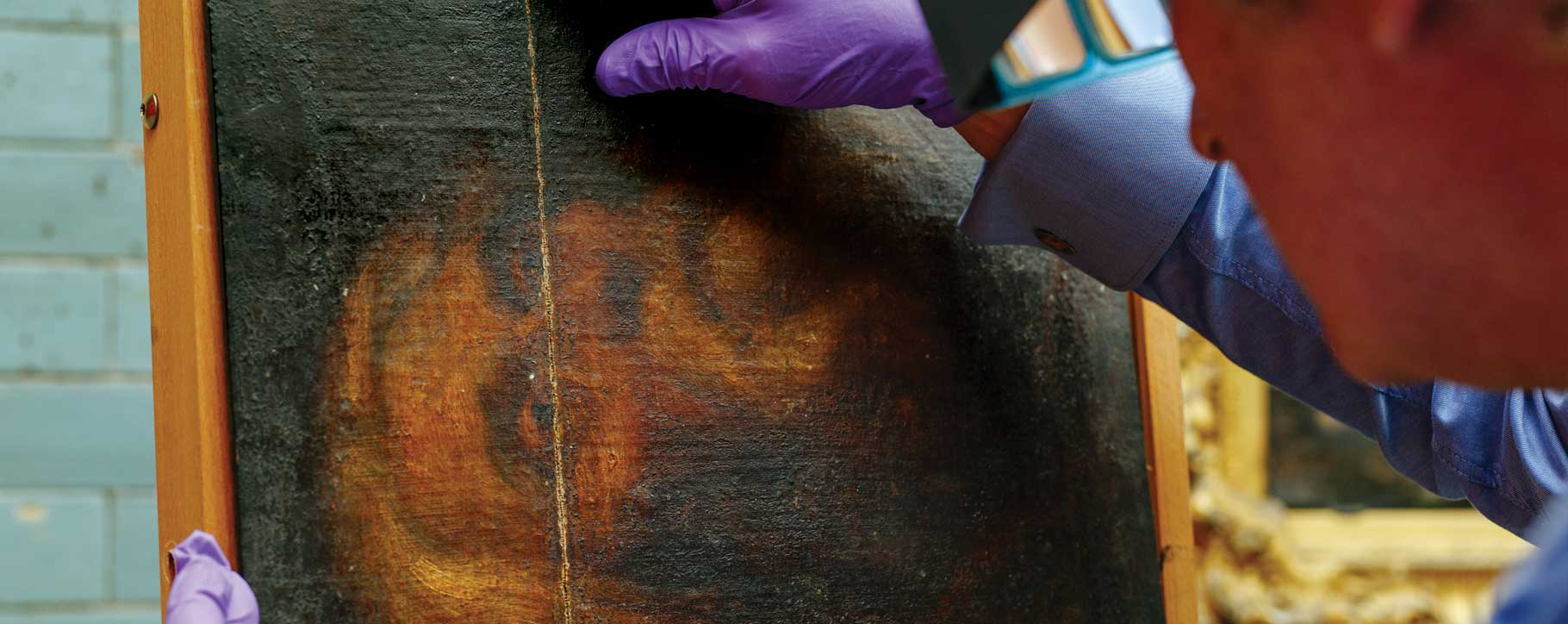
When artwork arrives at our studio to be cleaned or restored, we are often asked about valuations and what an artwork may be worth. Whether a collection has been inherited or acquired at auction, gaining an idea of value is an understandable consideration for many private collectors and can help with insurance, investment in restoration, charitable gifting, estate planning, tax purposes, art financing, future sales, divorce and specialist court cases.
If an artwork requires repair, knowing the value will assist in the decision making of whether the restoration is worthwhile or if it is beyond economic repair. We are often asked if we are able to provide valuations for insurance purposes where our clients have little knowledge about their artwork and don’t have a suitable level of insurance.
We advise clients that insurance companies may need a professional appraisal and more in-depth market information to determine value and level of cover required. The services of an accredited art valuer will provide the most comprehensive report and valuation services for a client, including the level of scrutiny often required from an insurance company.
The art valuer will visit the property to create either a full valuation with a detailed inventory of each piece in the collection or a walk-through validation, with overall values for each category of items. Such reports provide necessary up-to-date valuations to ensure contents are neither under or over-insured. Valuers will also take into consideration the general condition of the piece, including any damage and potential buyer interest if the work was to be sold.
Having provenance showing the ownership through the years immediately adds value and legitimacy. For clients who know the artist or date, they may choose to undertake their own research and obtain limited information online or via fine art auctioneers. If the artwork is unattributed, then this can impact the value. If the artist’s name is not clear, a professional art authentication expert can assist in attributing the artwork.
Our clients are often concerned whether the cost of restoration will be more than what the value of the painting is worth or if restoration will affect the value and sale price of the artwork.
Many paintings, including Old Masters, are likely to have had a form of restoration at some point but have still sold well. Whether the value of an artwork will be affected can largely be attributed to the scale of the work required and quality of the restoration. In some cases, it may not be possible to completely restore an artwork. This is more likely to be the case for contemporary painting, depending on the materials and styles used. For example, a thinly painted sky in a single block colour may show where a tear has been repaired.
There are treatments that can stabilise and lessen the visual impact of the damage. As long as this does not materially affect and alter the original work, it can be restored without decreasing the value. For high-profile restorations, the publicity can generate huge interest and significantly increase value. Recently, Leonardo da Vinci’s Salvator Mundi became the most expensive painting ever auctioned when it sold for $450 million after an extensive restoration campaign.
For clients thinking of selling items from their collection, it is worth noting that the valuation is an estimate only and the sale figure achieved may be less than estimated. Sometimes this is purely due to what a buyer is prepared to pay and other times it can be influenced by market trends.
The frequency of gaining valuations is another important consideration for art collectors, particularly for contemporary artwork. Banksy is an interesting example; in 2006 his work sold at Sotheby’s for £50,400 which at the time set an auction record. Banksy’s work now sells for six and seven-figure sums. Girl With Balloon which was also sold at Sotheby’s in 2018 for £1.04m, famously shredded just moments later and is now thought to have significantly increased in value despite being in pieces. For artworks like these, it is sensible to seek valuations more frequently, such as annually or at regular monthly intervals if the artist is high-profile. For established artists and Old Masters, there may be less of a fluctuation in value, but regular valuations should still be considered in the region of every three to five years.
Art collectors should take the time to consider obtaining a comprehensive valuation report. Valuations can be vital sources of legitimacy and provenance for art collectors, as well as being practical guides for insurance companies.






